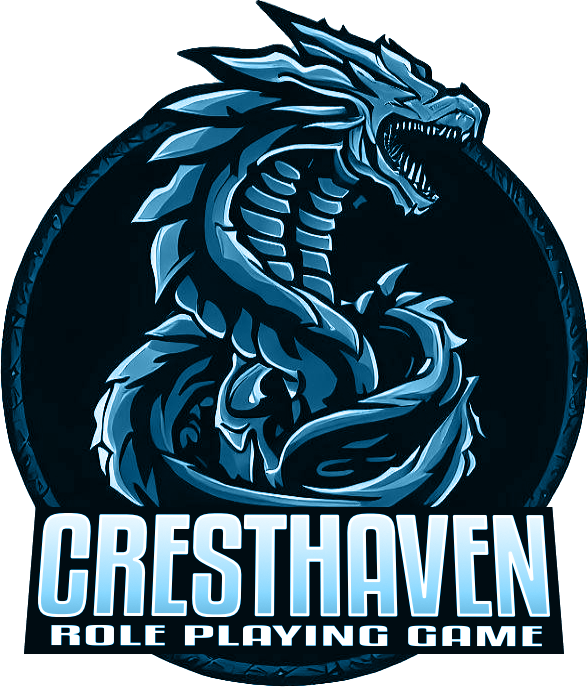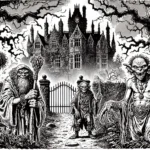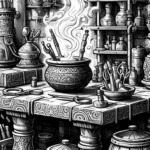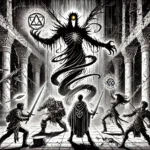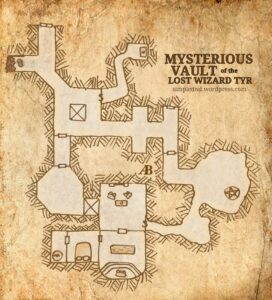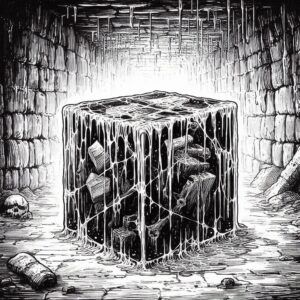Creating memorable and engaging encounters is a vital skill for any Dungeon Master (DM). A well-designed encounter can enhance the story, challenge the players, and provide a rewarding experience. Here’s a step-by-step guide to creating an engaging encounter that will captivate your players.
Step 1: Title
Create an Engaging and Thematic Title
Begin with a title that sets the tone and theme for the encounter. A good title can intrigue players and provide a hint of what’s to come.
For example, “The Dragon’s Lair” suggests a classic dungeon crawl, while “The Whispering Woods” hints at mystery and enchantment.
Step 2: Read to Player (Hook)
Provide an Immersive Description
Craft a compelling hook to read to the players at the start of the encounter. This should include an immersive description of the scene, a clear goal, a source of conflict, and a call to action.
For instance:
“You stand at the edge of a dark forest, the trees whispering secrets in the wind. Somewhere deep within, an ancient artifact lies hidden, guarded by unseen dangers. Will you brave the shadows and uncover its secrets?”
Step 3: Environment
Detail the Setting or Environment
Describe the environment where the encounter takes place. Include details such as lighting, terrain, weather, and any notable features. This helps players visualize the scene and understand the tactical landscape.
For example:
“The forest is dense, with towering trees casting long shadows. The ground is uneven, covered in roots and fallen leaves. A thick mist hangs in the air, reducing visibility to a few feet.”
Step 4: Main Challenge
Describe the Central Challenge or Conflict
Detail the main challenge of the encounter. This could be a formidable monster, a complex puzzle, or a tense situation.
For example:
“The heart of the forest is guarded by a corrupted treant, whose roots and branches attack anyone who dares to approach.”
Step 5: NPC Characters
Detail Key Non-Player Characters
Introduce any significant NPCs involved in the encounter, including their motivations and abilities.
For example:
“Eldara, a reclusive druid, lives in the forest. She knows how to pacify the treant but is wary of strangers. Her goal is to protect the forest from harm.”
Step 6: Tactics
Describe Enemy Tactics and Strategies
Explain the tactics and strategies the enemies will use. This helps you anticipate player actions and create a dynamic encounter.
For example:
“The treant will use its roots to entangle players, keeping them in place while it attacks with heavy branches. It will also call upon woodland creatures for aid.”
Step 7: Further Ideas
Suggest Additional Plot Hooks or Developments
Offer ideas for further plot hooks or developments that can stem from the encounter. This keeps the story evolving and players engaged. For example:
“The artifact is a key to an ancient vault deeper in the forest. Eldara might become an ally, offering quests to help restore balance to the woods.”
Step 8: Treasure
List the Rewards
Detail the rewards players can earn from successfully navigating the encounter. This can include items, gold, or other valuable treasures.
For example:
“The players find a magical amulet within the artifact, granting protection against necrotic damage, along with 200 gold pieces and a map to the ancient vault.”
Step 9: Experience Points (XP)
**Specify the Experience
Specify the Experience Points to be Awarded
Indicate the amount of experience points (XP) the players will earn for overcoming the encounter. This helps players track their progress and provides a sense of achievement.
For example:
“Successfully navigating the encounter and defeating the treant awards each player 700 XP. Additional XP may be earned for creative problem-solving or forging an alliance with Eldara.”
Discover more from Cresthaven RPG
Subscribe to get the latest posts sent to your email.
